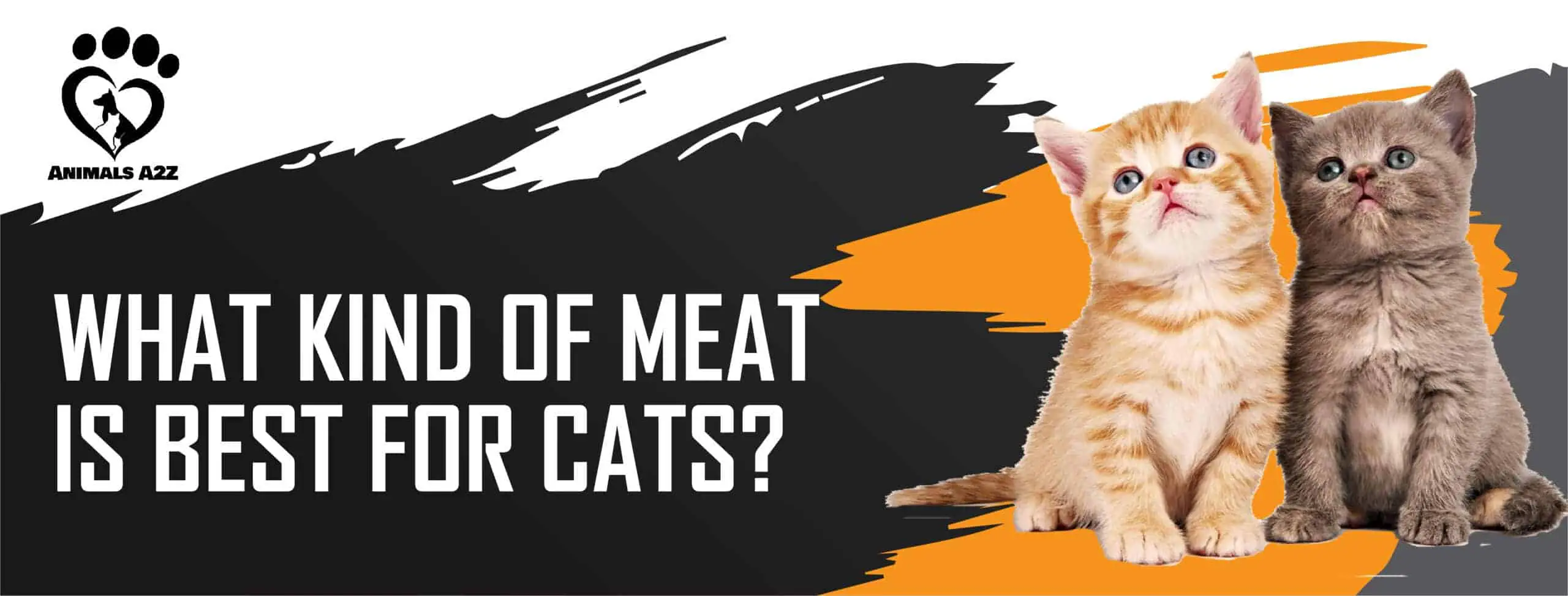When shopping for cat food, you may have noticed that there are too many options in terms of poultry and meat. When looking at the natural diet of cats in the wild, you should assume that a pet cat won’t be able to consume something that’s double its size. You should also take note that cats aren’t so skilled at catching food in the water.
The question is, what meat should you feed your cat?
Table of Contents
Best type of meat for cats
The best meats for your cat are chicken, rabbit, turkey, quail, and duck. Another good source of protein is eggs. Beef and lamb are also great meat for cats, as long as it is not more than 40% of their diet. Don’t serve too much salmon and tuna.
Meat to Include on Your Cat’s Diet
When talking about the best food for your cat, meat should usually be the first on the list. But what kind of meat can you feed your kitty as part of his diet?
Cats are meat eaters
Cats are true carnivores. Thus, they rely on nutrients coming from meats that they can’t get from the plant source. Due to evolution, cats are shaped into a carnivore and supreme predator which can’t survive without consuming meat. At times, this can create some sort of ethical dilemma for most cat owners.
Simply put, meat is the flesh of an animal that’s eaten as food. Most of the time, meat refers to skeletal muscle as well as associated tissues and fat, but It can also describe other kinds of edible tissues like organ meats.
Even though domestic cats are predators of predominantly rodents by nature, flesh from wild-harvested animals or domestic food animals can be utilized in order to come up with a certain substitute for the natural diet of a cat when it’s not desirable or possible to allow a particular cat to find its own food. This applies to every pet cat kept as their owner’s companion.
- Is Freeze-Dried Cat Food Better than other types
- Do you have an old cat? Should you give it different food?
- Eggs – good or bad for cats?
Where Does Meat Come From?
Meat comes from animals that had to be killed in order to harvest their fat, organs, tissues and muscle as food. When this reality is avoided, meat can’t be sourced. It’s true that some people don’t like the idea of killing or hunting animals, but those neatly packaged meat ingredients we can find at the supermarkets were actually acquired through killing animals too. It’s wise, even though not most of the time pleasant, to fully understand where the meat comes from.
Preparing Your Cat’s Food at Home
If you want to prepare your cat’s food at home, you’re not only responsible for the quality of the food, but also responsible for the meat source you use including what you support when you buy it. When you feed your cat homemade food, meat should be the most important and primary ingredient. Having said that, special care must be applied when choosing it. Cats are not carrion eaters or scavengers and they will likely refuse food that’s not fresh. Thus, meat for cats should be fresh as possible, not previously frozen, or is best consumed raw.
Heating the meat will also alter or destroy the most essential nutrients. In fact, feeding your cat cooked meat for a longer period of time can lead to deficiencies and eventually result in poor health.
When you prepare your cat’s food at home, you will have control and choice over the primary ingredients. Guided by your budget, lifestyle, or convictions, you can be able to raise your own meat, support organic farmers, or even take advantage of bargains that you can find in supermarkets – it’s totally up to you.
Meat from Farmers
If you want to give the best quality of meat for your cat and even your family, then buying meat from farmers is the most ideal way. Buy one-half side of lamb or beef from the farmers and have it nicely cut or wrapped so you can stash it in your freezer. This can supply your home nice meat for a whole year. Turkey and chicken can also be bought this way, but they have to be deboned first.
Meat from the SuperMarket or Grocery Store
Your typical supermarket or grocery store offers a wide variety of meat cuts from beef, lamb, turkey, or chicken which you can cut into smaller chunks or grind at home or you can also purchase ground meat. When you buy ground meats, you should make sure that they’re really fresh, most especially turkey meat since they can develop an off-flavor. In addition, try choosing leaner ground meats as well as avoid regular sausage and hamburger meats.
Best Meat Options
The options we have listed below are best for your cat since they can prey on them. This means cats can catch as well as kill these. Also, these poultry and meats provide a major nutritional balance with vitamins and minerals which are much easier to digest.
- Eggs
- Chicken
- Rabbit
- Turkey
- Quail
- Duck
Limited Options
The options here aren’t normal cat prey material but most catches and meat cuts are safe. However, you don’t want to give more than 40% of this to your cat since they don’t supply the right nutrition for a pet cat. Aside from that, they can’t kill these animals in their wildlife.
- Beef
- Lamb
- Cow and cat plush
Use Sparingly/Avoid These Options
A lot of people think that seafood is considered as a great option for their cat’s diet. However, come to think of it – when was the time you saw a pet cat hunting food in the water? In fact, this reason alone is enough to avoid these foods but the thing that matters most is that a lot of seafood in animal food is considered low quality which can possibly contain high amounts of mercury and lead. Thus, these are good to be given as your cat seldom treats. Yes, pork also makes this list since they don’t offer high nutritional value for your pet.
- Salmon
- Tuna
- Crustaceans
- Cat lobster
- Pork
Watch the Video: Raw or boiled beef meat? What does the cat like to eat?
Common Questions About What Kind of Meat to Feed Your Cat
Lamb meats are safe for your cats to eat but they are much costlier compared to other meat options. Often, lamb meat is also fatty, so it’s best to feed lamb to your cat in small quantities. You can also trim excess fat off the lamb meat before giving it to your cat.
Poultry is considered as a good protein source for cats. Most protein must be derived from the skeletal muscle like thighs and breast, rather than any organ meat. On the other hand, duck meat is safe for your cats too but they are higher in fat content, which is why it must be fed sparingly. When you serve duck meats and other poultry meats, make sure to cook it up to 165 F in order to kill the pathogens.
All fishes are safe for your cats to eat but just in small quantities. For example, canned salmon and tuna are considered as affordable options for cats, which can be served as their occasional treat. Furthermore, canned fish contain higher sodium content compared to cat food, thus, it must not be fed often. Aside from that, carnivorous fish like salmon and tuna contain much higher mercury levels, which is very dangerous to cats if it will accumulate in the system. Some fishes that are smaller like flounder and halibut are also safe for cats since they contain lesser mercury.
What meat should not be fed to cats?
It might sound a little strange, but raw meat and fish can contain bacteria that can cause food poisoning. So the meat you should not feed to your cat is the raw meat. On top of that, there is an enzyme in raw fish that destroys the important thiamine essential for B vitamins.
Conclusion
We hope this article helped you in terms of your cat’s nutritional diet. Just a tip, it’s best to avoid feeding your cat raw meat or catches unless you know where exactly it comes from (like from your own farm). On the other hand, there are also raw options available on the market which are better for your pet cat compared to doing it yourself. In addition, human-grade meat does not have any added minerals that are needed for the diet of your cat so consuming this can eventually lead to problems in her or his health.
Lastly, be sure to check cat treats too since most people use treats as fifteen percent of their pet’s daily diet. This is because many cat treats hide cheap fillers that are from beef, tuna, as well as chicken byproducts that are low quality.


